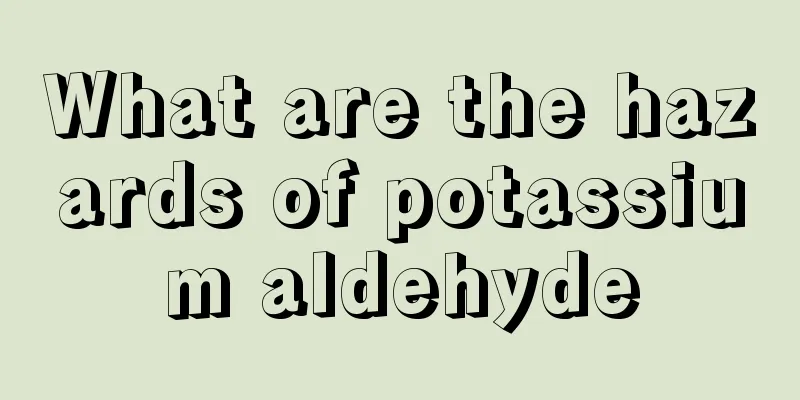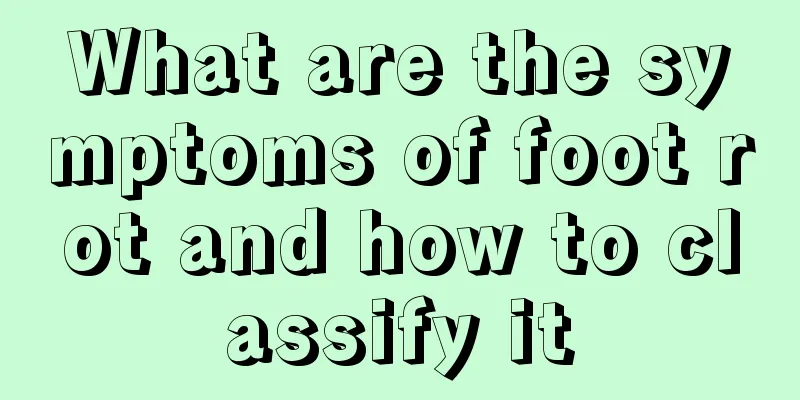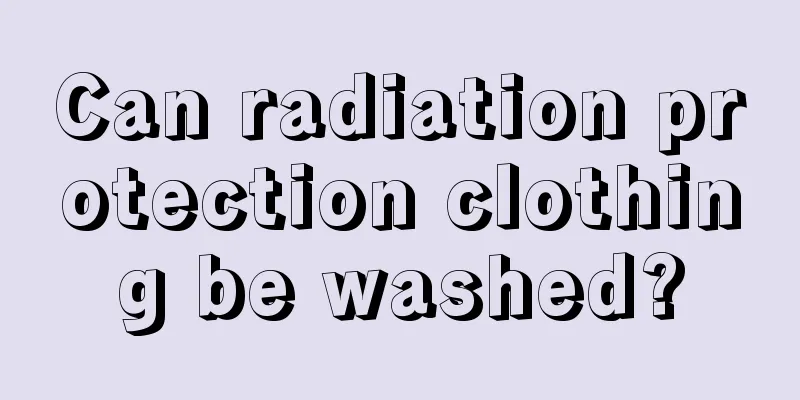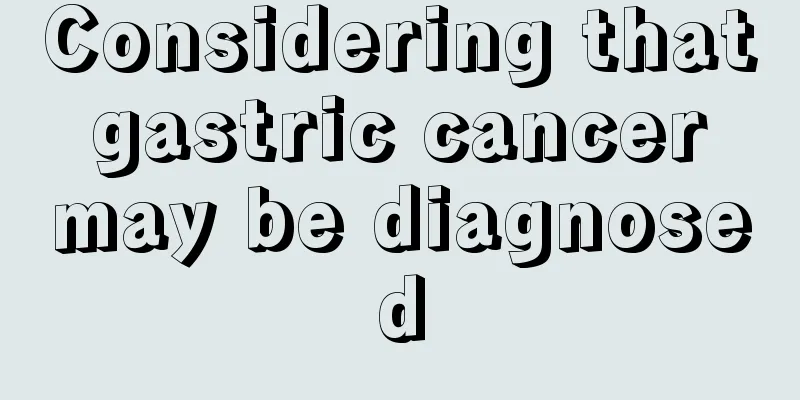What are the misunderstandings about the treatment of uterine fibroids? Treatment methods for uterine fibroids
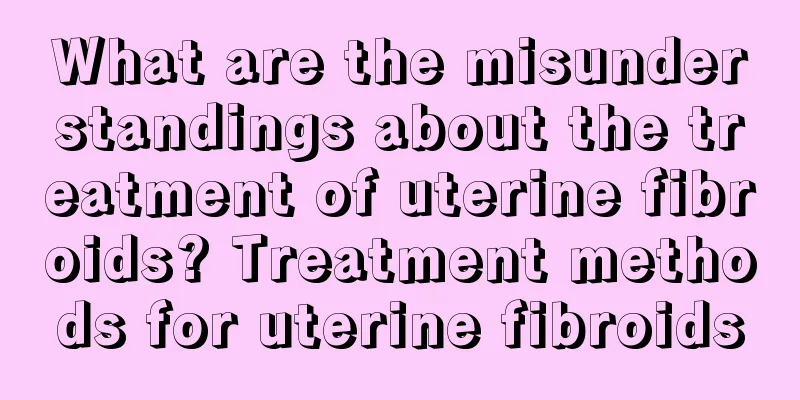
|
Uterine fibroids are the most common benign tumors in the female reproductive organs. They are composed of uterine wall muscle and fibrous tissue. Some fibroids are too large, leading to female infertility and bleeding. A small part of them may even be cancer. Timely treatment is needed, but many patients do not know how to treat them. So, how to effectively treat uterine fibroids? We will ask the hospital's experts to explain this issue. The symptoms of uterine fibroids and their severity mainly depend on the location, size, number and complications of the fibroids. Common symptoms of uterine fibroids include uterine bleeding, abdominal mass, vaginal discharge, compression, etc. What are the treatments for uterine fibroids? Which one is better? Principles of uterine fibroid treatment 1. Observe closely. Uterine fibroids are asymptomatic and small in size. They can be rechecked every 3 to 6 months. If the patient is over 40 years old and has a small amount of bleeding, and has no malignant lesions after the diagnosis of scraping, they can also be rechecked every 3 to 6 months and given proper rest. If there is no obvious change in the tumor, no bleeding or not severe bleeding, the fibroids will gradually shrink after menopause. 2. Myomectomy. Women under 35 years old, who have not given birth, have unobstructed fallopian tubes, and have no malignant tumors, should try to undergo myonucleiectomy to maintain fertility. The main risk of myomectomy is bleeding. In future pregnancies, we must be vigilant against uterine rupture and placenta implantation, so we must have an elective cesarean section. 3. Hysterectomy. Multiple uterine fibroids, larger than the size of a 3-month pregnancy, with obvious symptoms, and the patient already has offspring; uterine fibroids larger than the size of a 6-month pregnancy, even if asymptomatic, should undergo a total hysterectomy, and whether the ovaries are retained depends on the patient's age and ovarian condition. 4. Radiation therapy. In the past, it was one of the methods for treating uterine fibroids, especially those who were at risk of surgery and had clinical symptoms. At present, it is only used in individual cases, and the vast majority of people think it is unnecessary, and radiotherapy can also lead to loss of ovarian function. There are many treatments for uterine fibroids. The specific use depends on individual circumstances. It should be noted that the long-term inability of patients with uterine fibroids to be cured may be due to some misunderstandings in the treatment of this disease. The following are misunderstandings about the treatment of uterine fibroids. I hope that friends who are undergoing treatment can avoid these misunderstandings: 1. One-size-fits-all approach. Many female friends will choose myomectomy, but many patients with uterine fibroids have irregular vaginal bleeding after surgery, mainly because they did not have a careful examination before the operation. Therefore, if you choose myomectomy, you must be carefully examined, and even after the operation, you must have regular examinations. And do a good job in preventing recurrence, and standardize the systematic use of drug treatment after surgery. 2. Misconceptions about self-coagulation knife treatment. Many patients with uterine fibroids choose self-coagulation knife for treatment because it claims no surgery, no bleeding, and no pain. But after self-coagulation knife treatment, many complications will occur. Therefore, when choosing a treatment method, we must consider its pros and cons, not only seeing that it can solve temporary pain, but also ignoring it will bring more long-term pain. 3. Take medicine for treatment. Many patients with uterine fibroids are worried about the side effects of surgical treatment and choose to use medication for conservative treatment, but some patients with uterine fibroids must use surgical treatment because drug treatment can only relieve the symptoms of uterine fibroids but cannot cure them. |
<<: How to prevent cervical cancer? Common symptoms of cervical cancer
>>: How is cervical cancer diagnosed? What are the ways to prevent cervical cancer
Recommend
There is a black vertical line on the belly
After becoming pregnant, women will find that the...
What to do if anal rupture and bleeding
Hemorrhoids often cause patients to be restless. ...
What to do if baby formula is not finished
Infant milk powder is an important nutritional fo...
What is the best way to treat lung cancer? It is recommended to use traditional Chinese medicine to treat lung cancer
The earlier lung cancer is treated, the better. H...
How to eat Cordyceps sinensis most effectively
It should be noted that although taking Cordyceps...
What are the symptoms of pancreatic cancer before death?
What are the symptoms of pancreatic cancer before...
Mid-term treatment costs for nasopharyngeal carcinoma
Many nasopharyngeal cancer patients suffer from t...
What should I do if I have tooth decay and black holes?
Having cavities and black holes in your teeth is ...
What are the precautions for swimming in summer
Summer can be said to be the best season, because...
What is the cause of bleeding moles on the face
Moles are not unfamiliar to people, and the locat...
What are the symptoms of tenosynovitis?
There are two common types of tenosynovitis. The ...
What aspects does mental health include?
In recent years, medical technology has developed...
Is long-term dreaming harmful to the body?
Almost everyone dreams, but the frequency of drea...
Why does the big toe nail turn black?
Many patients with blood-related diseases choose ...
What are the symptoms of bacterial urethritis
Common symptoms of bacterial urethritis include d...

